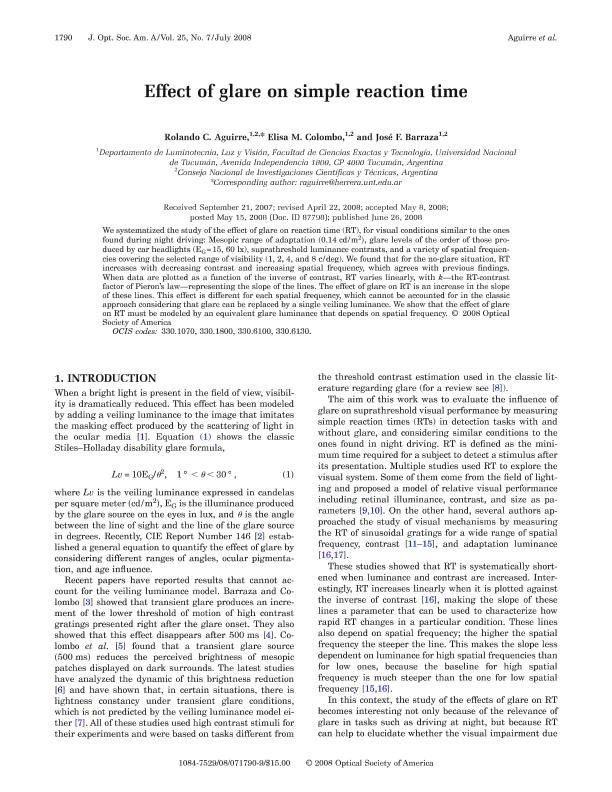Artículo
Effect of glare on simple reaction time
Fecha de publicación:
07/2008
Editorial:
Optical Society of America
Revista:
Journal of the Optical Society of America A: Optics, Image Science and Vision
ISSN:
1084-7529
e-ISSN:
1520-8532
Idioma:
Inglés
Tipo de recurso:
Artículo publicado
Clasificación temática:
Resumen
We systematized the study of the effect of glare on reaction time (RT), for visual conditions similar to the ones found during night driving: Mesopic range of adaptation (0.14 cd/m2), glare levels of the order of those produced by car headlights (EG= 15, 60 Ix), suprathreshold luminance contrasts, and a variety of spatial frequencies covering the selected range of visibility (1, 2, 4, and 8 c/deg). We found that for the no-glare situation, RT increases with decreasing contrast and increasing spatial frequency, which agrees with previous findings. When data are plotted as a function of the inverse of contrast, RT varies linearly, with k - the RT-contrast factor of Pieron's law - representing the slope of the lines. The effect of glare on RT is an increase in the slope of these lines. This effect is different for each spatial frequency, which cannot be accounted for in the classic approach considering that glare can be replaced by a single veiling luminance. We show that the effect of glare on RT must be modeled by an equivalent glare luminance that depends on spatial frequency.
Palabras clave:
GLARE
,
REACTION TIME
,
MESOPIC RANGE
Archivos asociados
Licencia
Identificadores
Colecciones
Articulos(ILAV)
Articulos de INST.DE INVESTIGACION EN LUZ, AMBIENTE Y VISION
Articulos de INST.DE INVESTIGACION EN LUZ, AMBIENTE Y VISION
Citación
Aguirre, Rolando Carlos; Barraza, Jose Fernando; Colombo, Elisa Margarita; Effect of glare on simple reaction time; Optical Society of America; Journal of the Optical Society of America A: Optics, Image Science and Vision; 25; 7; 7-2008; 1790-1798
Compartir
Altmétricas




